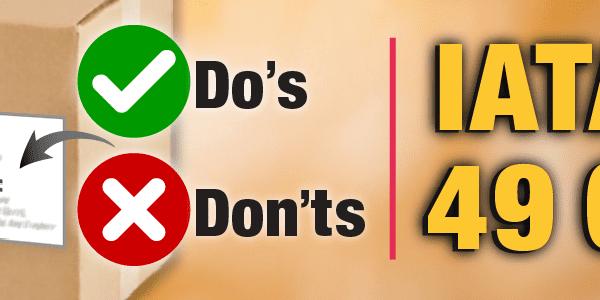Classification, Personal Electronic Devices, Consumer Commodities, and Preparing Hazardous Materials for Transport
Welcome back to the Regulatory Helpdesk where we answer your dangerous goods & hazmat questions. We’re here to help you become independent with – and understand the whys and hows – of the regulations.
Classification Question
-
Q. I’m trying to verify how to ship a drum that has a flashpoint of 170° F and is a marine pollutant to Japan. My company has to get it to the port and then it will go on a boat. The SDS says it is a combustible liquid NA1993 but Japan doesn’t have that designation.
Do I ship this product as UN1993?
-
A. No. The flashpoint of 170° F puts you well beyond the limits of any packing group for a Class 3 flammable liquid, n.o.s. under UN1993. The flashpoint does qualify as a combustible liquid but it would only be regulated in a bulk packaging.
Your drum is not bulk. Technically the “flammability” aspect of this is now a moot point. Since you know the material is a marine pollutant, shipping it as UN3082 would be the best bet.
Personal Electronic Devices
- Q. I have an employee flying from the US to Greece with a satellite phone so he can have access to the office and home while he is on vacation. Does he need to do anything different or follow any regulations?
- A. No. In this case, the IATA regulations come into play. The satellite phone in this situation is a personal electronic device. It should be placed in his carry-on luggage and turned off.
Shipping Consumer Commodities
- Q. My UPS driver told me my stuff doesn’t have to be marked as anything when he picks it up from us since we manufacture consumer commodities. Is this true? These folks get trained every year, so shouldn’t they know?
-
A. Generally, we at ICC cannot speak to what a carrier may or may not require for a shipment. In this case though, bear in mind that drivers receive different training than what you as a shipper goes through for hazmat certification.
Also, a good rule of thumb – always ask someone for the actual regulatory reference when they say things that sound odd. This will allow you to check things out on your own. By the way, consumer commodity packages under 49 CFR still have to be marked with the proper shipping name of “consumer commodity” and have the ORM-D designation on them.
Shipping Consumer Commodities
- Q. Is it true that I can send any quantity of hazardous material as a consumer commodity as long as it is being sent to a retail sales outlet?
-
A. No. You can’t just put an ORM-D sticker and the words “Consumer Commodity” on a box of hazardous material just because it is going to a retail store. Consumer Commodities are a TYPE of Limited Quantity. These materials must still be packaged in combination packaging using the limits set out in the limited quantity section to which you would be referred by column 8A in the hazardous materials table.
These goods must also meet the definition of a consumer commodity in §171.8. If your product meets all of those AND is packaged appropriately, then it can be reclassified/identified as a consumer commodity. It is still a hazardous material by definition but because of its packaging the risk is lowered.
Preparing a Hazardous Material for Transport
- Q. My company has some containers of chloroform that needs to be shipped to another site. We have 10 containers. Each one is a metal can and inside that is a 1-liter plastic bottle of chloroform with cushioning. How do we need to package this for US ground shipment? The metal outer can does not have a UN specification packaging code on it. We think they were originally shipped to us in a cardboard box.
-
A. Chloroform is UN1888, a class 6.1 liquid in PG III. The limited quantity exception in §173.153 can be used in this instance. The inner container limit under that exception is 5 liters in size. You are under that by having only 1 liter in each can.
In this instance, each can is essentially acting as an inner receptacle. You can put as many of those cans into a non-UN Specification outer package as you want until the 66-pound gross weight limit is met. The only thing needed on the outside would be the limited quantity mark as shown in §172.315.





